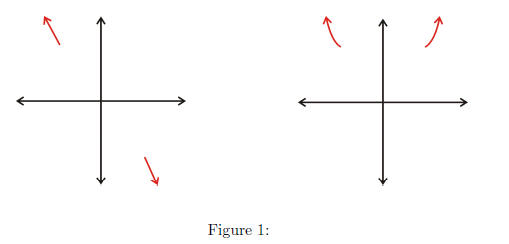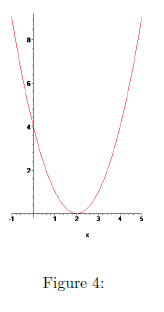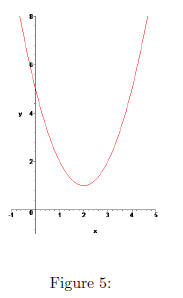- Home
- INTERMEDIATE ALGEBRA
- Course Syllabus for Algebra I
- Mid-Plains Community College
- FRACTION OF A WHOLE NUMBER
- Systems of Linear Equations
- MATH FIELD DAY
- Course Outline for Finite Mathematics
- Calculus
- Algebra Final Examination
- Math 310 Exam #2
- Review of Trigonometric Functions
- Math 118 Practice test
- Precalculus Review
- Section 12
- Literal Equations
- Calculus Term Definitions
- Math 327A Exercise 2
- Public Key Algorithms II
- Maximizing Triangle Area
- Precalculus I Review for Midterm
- REVIEW OF A FIRST COURSE IN LINEAR ALGEBRA
- Math 6310 Homework 5
- Some Proofs of the Existence of Irrational Numbers
- ALGEBRAIC PROPERTIES OF MATRIX OPERATIONS
- Math 142 - Chapter 2 Lecture Notes
- Math 112 syllabus
- Math 371 Problem Set
- Complex Numbers,Complex Functions and Contour Integrals
- APPLICATIONS OF LINEAR EQUATIONS
- Week 4 Math
- Fractions
- Investigating Liner Equations Using Graphing Calculator
- MATH 23 FINAL EXAM REVIEW
- Algebra 1
- PYTHAGOREAN THEOREM AND DISTANCE FORMULA
- Georgia Performance Standards Framework for Mathematics - Grade 6
- Intermediate Algebra
- Introduction to Fractions
- FACTORINGS OF QUADRATIC FUNCTIONS
- Elementary Algebra Syllabus
- Description of Mathematics
- Integration Review Solutions
- College Algebra - Applications
- A Tip Sheet on GREATEST COMMON FACTOR
- Syllabus for Elementary Algebra
- College Algebra II and Analytic Geometry
- Functions
- BASIC MATHEMATICS
- Quadratic Equations
- Language Arts, Math, Science, Social Studies, Char
- Fractions and Decimals
- ON SOLUTIONS OF LINEAR EQUATIONS
- Math 35 Practice Final
- Solving Equations
- Introduction to Symbolic Computation
- Course Syllabus for Math 935
- Fractions
- Fabulous Fractions
- Archimedean Property and Distribution of Q in R
- Algebra for Calculus
- Math112 Practice Test #2
- College Algebra and Trigonometry
- ALGEBRA 1A TASKS
- Description of Mathematics
- Simplifying Expressions
- Imaginary and Complex Numbers
- Building and Teaching a Math Enhancement
- Math Problems
- Algebra of Matrices Systems of Linear Equations
- Survey of Algebra
- Approximation of irrational numbers
- More about Quadratic Functions
- Long Division
- Algebraic Properties of Matrix Operation
- MATH 101 Intermediate Algebra
- Rational Number Project
- Departmental Syllabus for Finite Mathematics
- WRITTEN HOMEWORK ASSIGNMENT
- Description of Mathematics
- Rationalize Denominators
- Math Proficiency Placement Exam
- linear Equations
- Description of Mathematics & Statistics
- Systems of Linear Equations
- Algebraic Thinking
- Study Sheets - Decimals
- An Overview of Babylonian Mathematics
- Mathematics 115 - College Algebra
- Complex Numbers,Complex Functions and Contour Integrals
- Growing Circles
- Algebra II Course Curriculum
- The Natural Logarithmic Function: Integration
- Rational Expressions
- QUANTITATIVE METHODS
- Basic Facts about Rational Funct
- Statistics
- MAT 1033 FINAL WORKSHOP REVIEW
- Measurements Significant figures
- Pre-Calculus 1
- Compositions and Inverses of Functions
FACTORINGS OF QUADRATIC FUNCTIONS
1 End Behavior for linear and Quadratic Functions
A linear function like f(x) = 2x − 3 or a quadratic function f(x) = x2 + 5x
+3 are pretty generic. We have
the tools to determine what the graphs look like just by looking at the
functions. Today, I want to start
looking at more general aspects of these functions that carry through to the
more complicated polynomial
functions (e.g., f(x) = 2x4 − 3x3 + 7x2 − x + 11). Specifically, I want to
look at what the graphs look like
on the ends, what they look like near the x-axis, and distinguishing aspects of
the graph like bumps and
wiggles.
Let’s start with end behavior. We’ve seen this so far as the ends of the
curves we’ve drawn that point up or
down and signify that the functions run off to positive or negative infinity
 .
In particular, we want to
.
In particular, we want to
describe how the functions behave for very large values of x.
First, let’s look at the function f(x) = x2 + 5x + 3 at a somewhat large
number, like x = 1,000,000 for
example. We get

If we look at each term separately, we get the numbers

Imagine graphing the point (1,000,000 , 1,000,005,000,003) (Good luck!). It
wouldn’t look much different
from (1,000,000 , 1,000,000,000,000).
We will say that x2 dominates x, when x is very large. Similarly, x
dominates any constant. Notice that
the same thing happens for large negative numbers like x = −1,000,000. Out
towards the ends of the graph,
therefore, f(x) = x2+5x+3 doesn’t look a whole lot different from f(x) = x2,
and when we’re just sketching
graphs, they don’t look different at all. Similarly, the function f(x) = 2x − 3
looks a lot like f(x) = 2x for
large values of x.

As another example, consider the linear function f(x) = −3x+11. Since the
x-term dominates the constant
term, the end behavior is the same as the function f(x) = −3x. For large
positive values of x, f(x) is large
and negative, so the graph will point down on the right. Similarly, the graph
will point up on the left, as o
n the left of Figure 1.
On the other hand, if we have the function f(x) = x2+5x+3, this has the same
end behavior as f(x) = x2,
so the ends will go up on both sides, as on the right side of Figure ??. I’ve
given these a little curve upwards
to indicate that x2 gets bigger faster than x does.
1.1 Quiz 04-A
What is the end behavior of the following functions?
1. f(x) = 2x − 4
2. f(x) = −x
3. f(x) = −2x2 + 11x + 4
2 Factorings of Quadratic Functions
I’m going to assume that you can factor quadratic expressions, at least in
the simpler cases. I want to focus
on what information we can draw from the factorings.
Given the quadratic function f(x) = x2 − 4x + 3, we can factor it as follows.
f(x) = (x − 1)(x − 3).
Since anything times zero is zero, we can see that if x = 1 or if x = 3, we
get f(1) = 0 and f(3) = 0. These
are the places where the graph crosses the x-axis, as can be seen in Figure 2.

For very large values of x (both positive and negative), the magnitude of x2
is much larger than x, so it will
dominate to the right and left. The sign on the x2-term, therefore, determines
whether the parabola will
open upwards or downwards.
For example, consider the function

which is the first function multiplied by −2. It will open downwards. In fact, we can factor as follows.

The x-intercepts are the same, x = 1, 3, but now everything is multiplied by
a negative number, and that
turns things upside-down. Look at Figure 3. The 2 stretches everything
vertically, so the graph also looks
skinnier.
The basic factorings give us three possibilities. If we shift the function
function f up one unit, we get the
following.

Since both factors are the same, only x = 2 is an x-intercept. The x2-term is
positive, so the parabola opens
upwards. The graph must look as it does in Figure 4, therefore.
2 FACTORINGS OF QUADRATIC FUNCTIONS


3 HOMEWORK 04
If we shift the function up any higher, it won’t intersect the x-axis at all.
This corresponds to the fact that
the function

does not factor over the real numbers. In fact, if we try to solve the
equation x2 − 4x + 5 = 0 using the
quadratic formula, we get

We have to use imaginery numbers to find square roots of negative numbers.
Anyway, the graph is shown
in Figure 5

We can also multiply by constants to stretch and compress the graphs
vertically, and multiplying by negative
numbers makes the parabolas open downwards.
2.1 Quiz 02-B
Sketch the graphs of the following quadratic functions. For the answers, give
the x-intercepts and whether
the graph opens up or down.
1. f(x) = (x + 3)(x − 1).
2. f(x) = (x + 1)2.
3. f(x) = x2 + 1. This does not factor over the reals, and the vertex is at x =
0.
4. f(x) = −3(x + 3)(x − 1).
3 Homework 04
For each of the given functions, find the x-intercept(s) and the end behavior.
1. f(x) = x − 4.
2. f(x) = (x + 4)(x − 2).
3. f(x) = (x − 3)2.
4. f(x) = x2 + x + 1. This does not factor.
5. f(x) = 2(x − 3)(x − 5).
6. f(x) = −2(x + 1)(x + 1).
7. f(x) = −x2 − x − 1. Compare this to problem 4.


